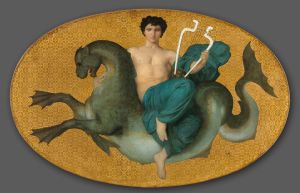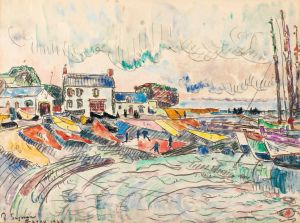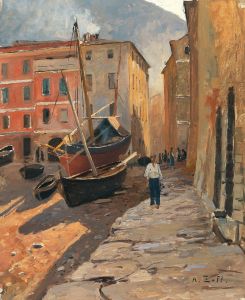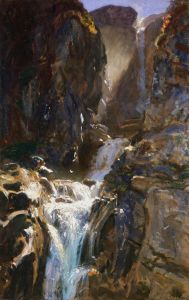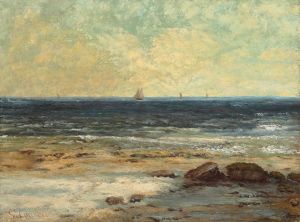
The Sea
A hand-painted replica of Gustave Courbet’s masterpiece The Sea, meticulously crafted by professional artists to capture the true essence of the original. Each piece is created with museum-quality canvas and rare mineral pigments, carefully painted by experienced artists with delicate brushstrokes and rich, layered colors to perfectly recreate the texture of the original artwork. Unlike machine-printed reproductions, this hand-painted version brings the painting to life, infused with the artist’s emotions and skill in every stroke. Whether for personal collection or home decoration, it instantly elevates the artistic atmosphere of any space.
"The Sea" is a painting by the French artist Gustave Courbet, created in 1865. Courbet was a leading figure in the Realist movement, which emerged in France in the mid-19th century. This movement was characterized by a focus on depicting everyday scenes and subjects in a naturalistic manner, often as a reaction against the idealized forms and subjects of Romanticism and Neoclassicism.
Gustave Courbet was born on June 10, 1819, in Ornans, a small town in the Franche-Comté region of France. He moved to Paris in 1839 to pursue his artistic career and quickly became known for his bold and unconventional approach to painting. Courbet's work often depicted rural life, landscapes, and seascapes with a raw and unembellished realism that challenged the artistic norms of his time.
"The Sea" is one of Courbet's many seascapes, a genre he frequently explored throughout his career. This particular painting captures the power and majesty of the ocean, a subject that fascinated Courbet and allowed him to experiment with different techniques and styles. The painting is notable for its dramatic composition, with turbulent waves crashing against rocky cliffs under a stormy sky. Courbet's use of thick, textured brushstrokes and a muted color palette effectively conveys the raw energy and movement of the sea.
Courbet's seascapes, including "The Sea," were influenced by his travels along the coastlines of France, particularly in Normandy and Brittany. These regions provided him with ample inspiration and opportunities to observe the changing moods and conditions of the ocean. Courbet's ability to capture the dynamic and often unpredictable nature of the sea set his work apart from other landscape painters of his time.
"The Sea" reflects Courbet's commitment to realism and his desire to depict the natural world with honesty and authenticity. Unlike many of his contemporaries, who often idealized or romanticized their subjects, Courbet sought to present the world as it was, with all its imperfections and complexities. This approach earned him both praise and criticism during his lifetime, but it ultimately solidified his reputation as a pioneering and influential artist.
Courbet's impact on the art world extended beyond his own work. He was a mentor and inspiration to many younger artists, including the Impressionists, who admired his innovative techniques and commitment to realism. Courbet's legacy can be seen in the works of artists such as Claude Monet, who also sought to capture the fleeting effects of light and atmosphere in their landscapes and seascapes.
In summary, "The Sea" by Gustave Courbet is a powerful example of the artist's realist approach to painting. Through his masterful use of composition, texture, and color, Courbet captures the raw energy and beauty of the ocean, offering viewers a glimpse into the natural world as he saw it. This painting, like many of Courbet's works, continues to be celebrated for its boldness, authenticity, and enduring influence on the course of art history.





